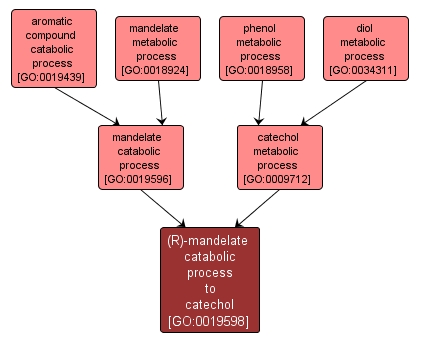GO TERM SUMMARY
|
| Name: |
(R)-mandelate catabolic process to catechol |
| Acc: |
GO:0019598 |
| Aspect: |
Biological Process |
| Desc: |
The chemical reactions and pathways resulting in the breakdown of (R)-mandelate into other compounds, including catechol. |
Synonyms:
- (R)-mandelate breakdown to catechol
- (R)-mandelate degradation to catechol
|
|

|
INTERACTIVE GO GRAPH
|














